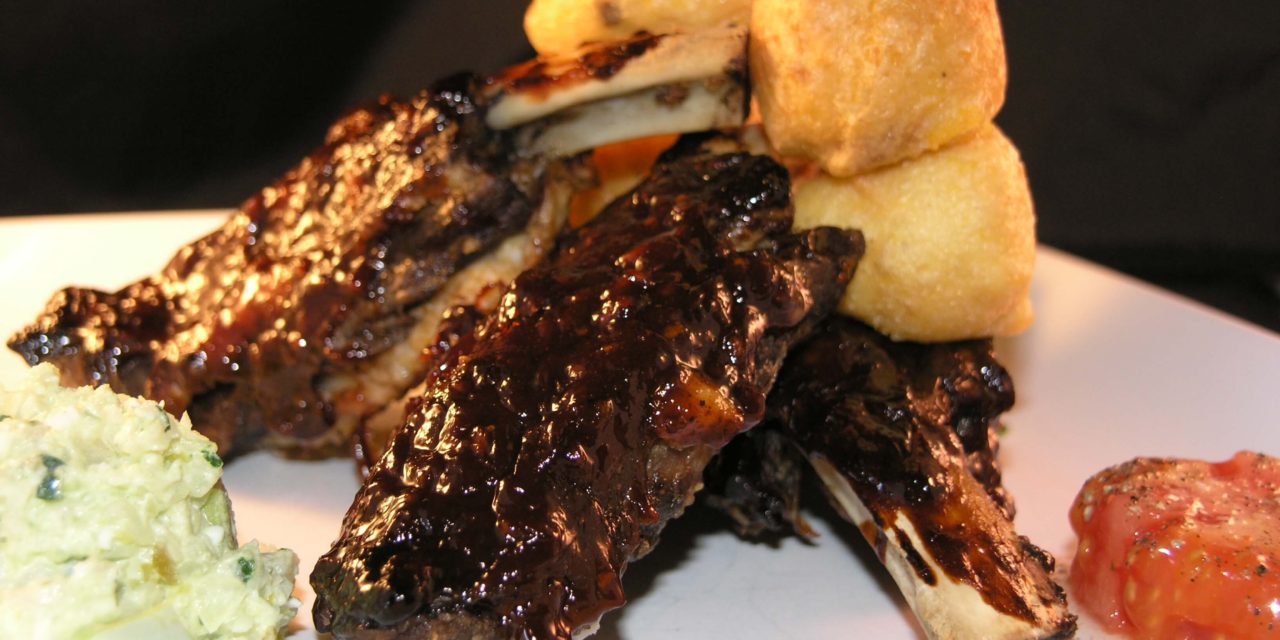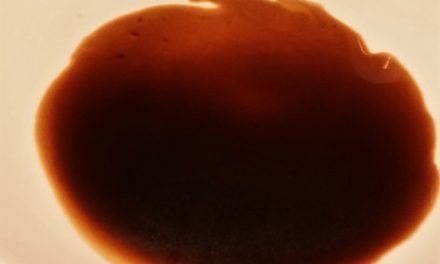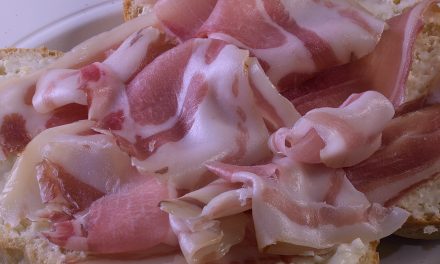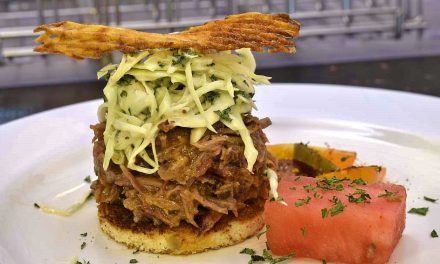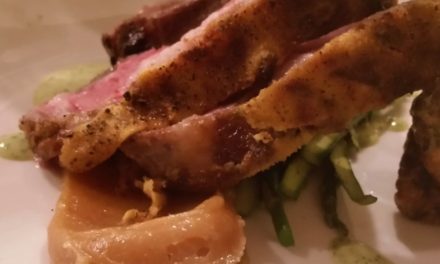We’re going to get right down to cooking some BBQ Beef Back Ribs here, but I strongly urge readers to take a look at the article about “syzygizing” Sous Vide and BBQ at some point. Those of you who are skeptical about getting good results from indoor BBQ may at least find it somewhat reassuring, if not completely convincing.
Beef Back Ribs. These things are no bargain. The butchers know that we desire them, but there is really only a tiny bit of meat on them, unlike pork spare ribs. That being said, we found some that weren’t too precious, even though the butcher had really done an excellent job leaving most of the meat, well, on the MEAT.
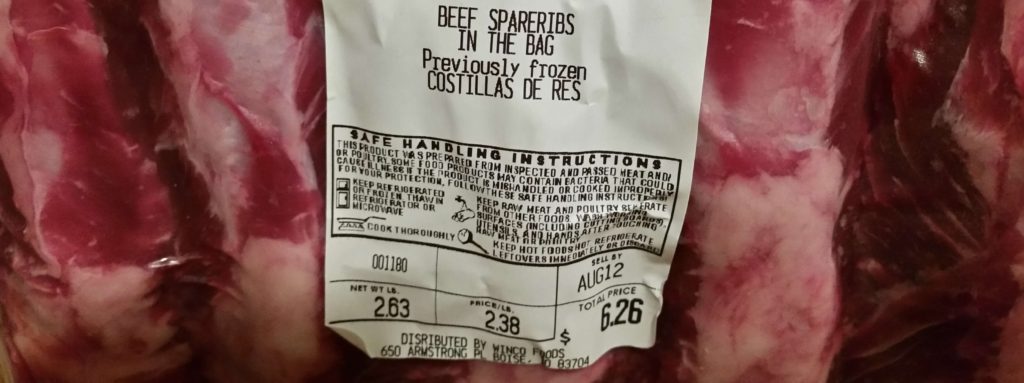
I was surprised to find them under $3/lb.
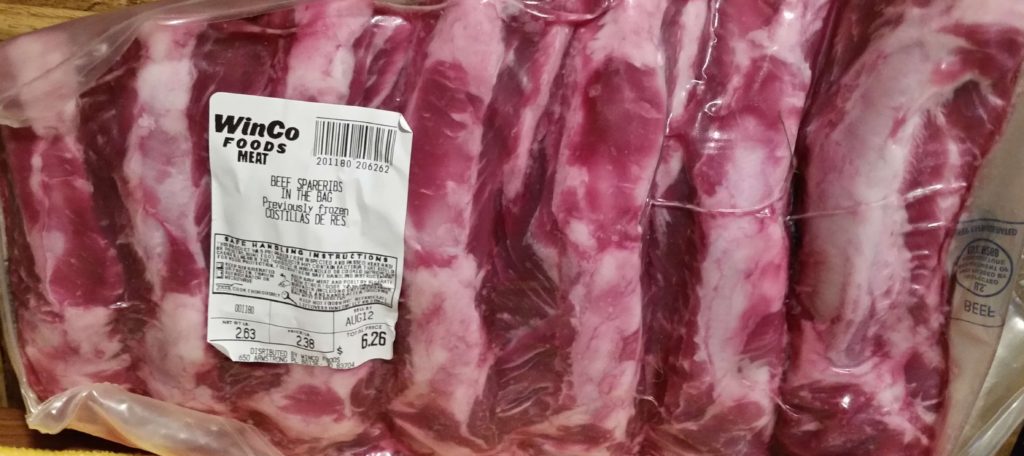
But, as you can see, all the meat is between the bones, hardly a speck remaining on the meat side
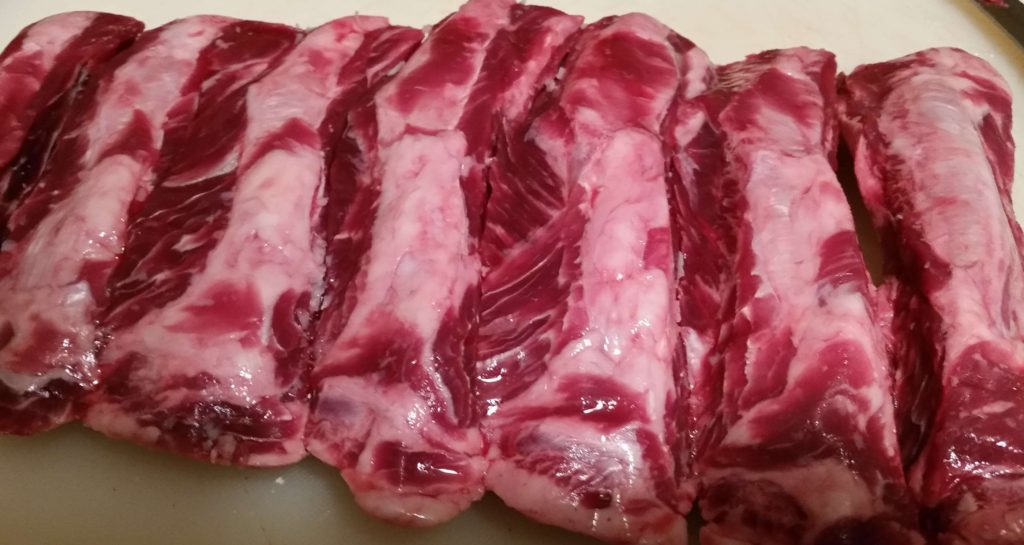
Still, it looks appetizing
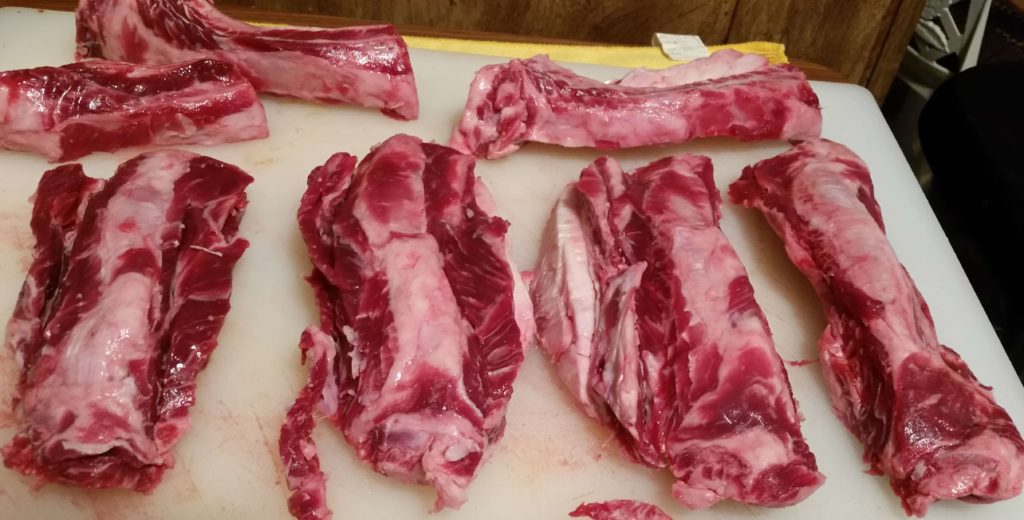
I cut the ribs in such a way as to leave most of the meat on four of the bones, and hardly any on the other three. If I was going to BBQ these by traditional methods, I would leave the whole piece intact. With all this extra surface area, they would most certainly dry out in the typical smoker environment.
But, Sous Vide “can’t tell” if the meat has been cut or not, and all the flavor–and moisture–is securely locked in the bag. In fact, in Sous Vide, the more surface area, the BETTER. You really WANT as much of the meat exposed to the mild heat as possible.
Note: you CAN process the whole side of ribs in one piece, as long as your bag, and, your tank can accommodate it.
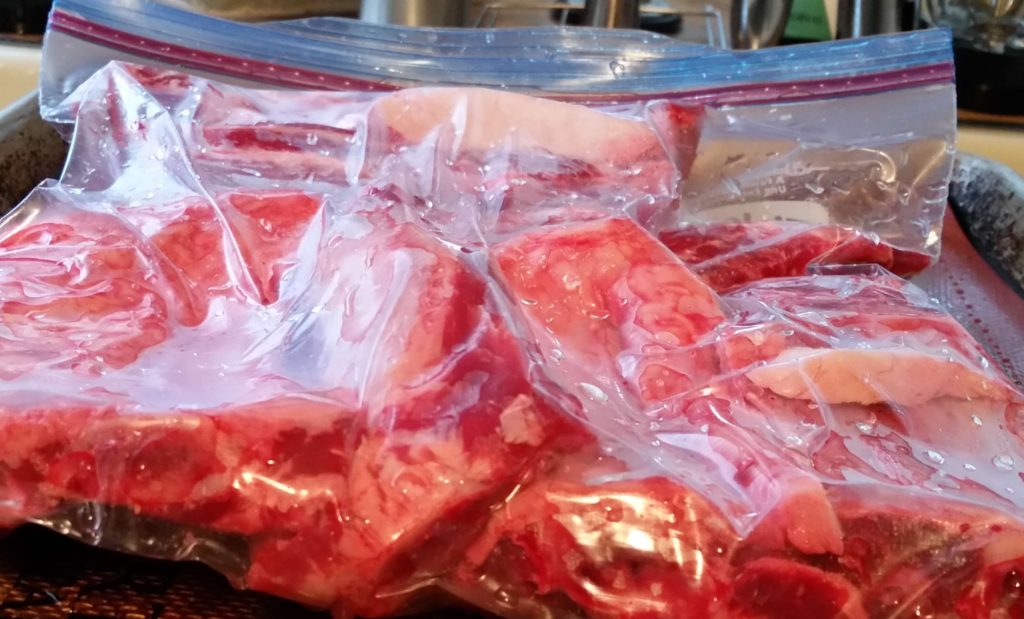
I like using multiple bags, for a simple reason. Unless we’re entertaining, we rarely plan to eat that much in one sitting. As long as the seal is not broken, the processed ribs will last a long long time in the fridge, much like a carton of pasteurized milk that you buy in the store.

If you don’t open it, that milk will last long after the expiration date, because bacteria have been reduced to such a low level, they are basically disabled. Pasteurized products are not sterile–but there are so few pathogens in the product, they are unable to take hold in the medium.
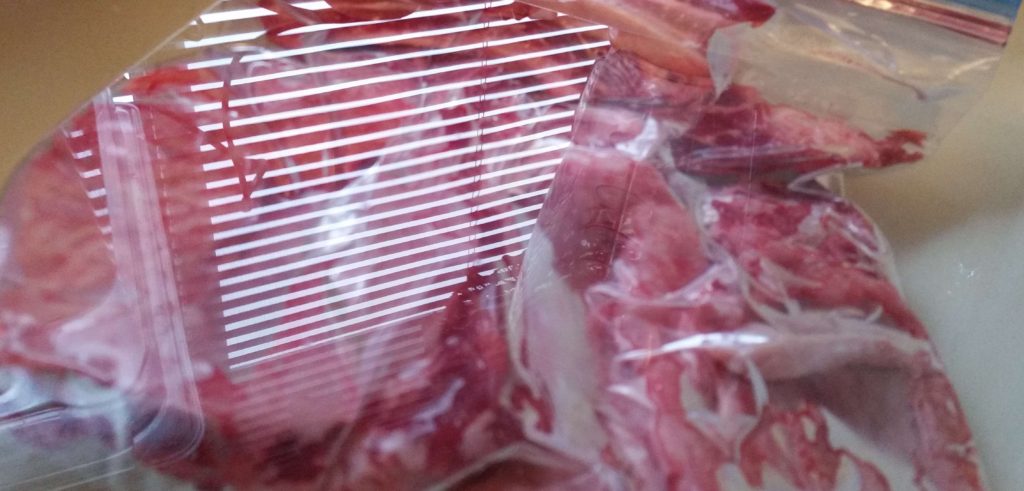
155Fx24 hours, make sure you pinch.
Into the tank we go, you can see the reflection of my Venetian blinds on the surface of the tank
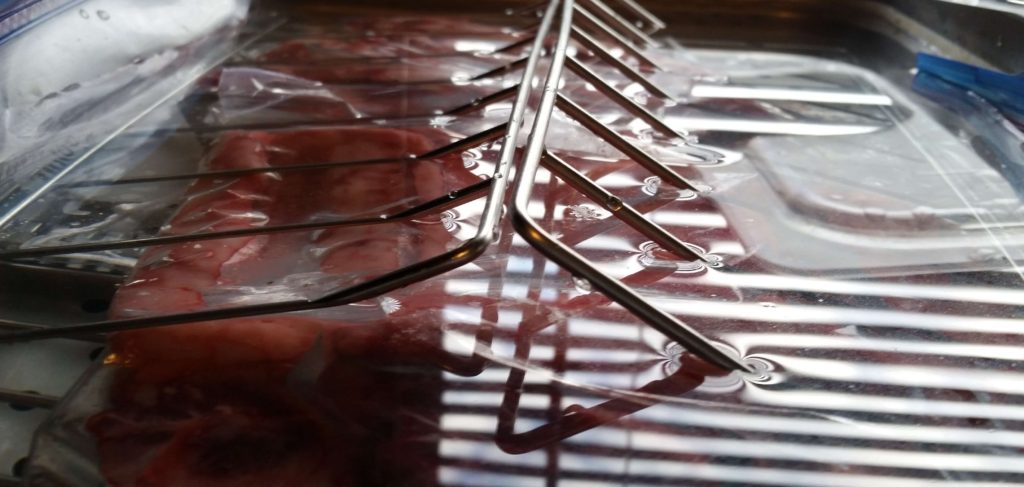
Sous Vide processing MUST always take place fully submerged–that is the only way you can be sure that you have consistent temperatures. Bones are more dense than meat, so they pose an even higher risk of spoilage, hot OR cold. Even refrigerated meat with bone attached will spoil faster than boneless. In this picture, I’m using the Lipavi racks to weigh down the bags. Make sure there’s circulation room AROUND the bags too.
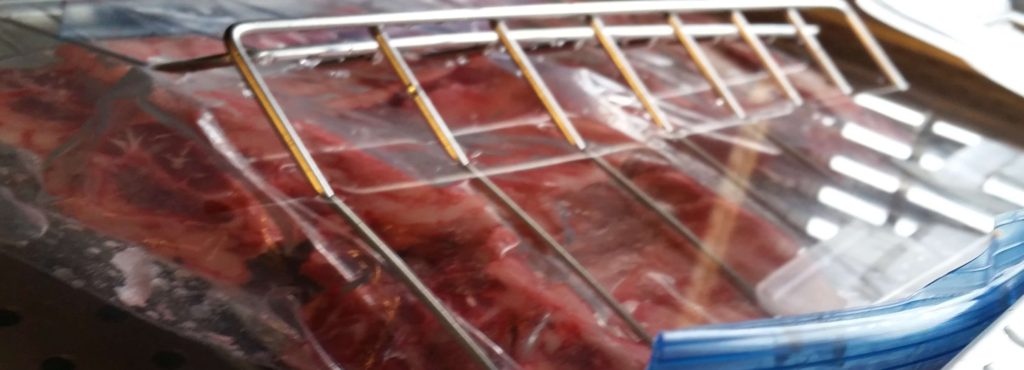
The volume of your product in the tank should never exceed the volume of the water, so there is room for the heat, to travel throughout the vessel.
After processing, I shocked the ribs cold, to prevent overcooking in the next step. I dip the bags in warm water to dissolve the purge, which I save and clarify.
Dry the bones off, paint them with some beaten egg white, and sprinkle with salt and pepper.
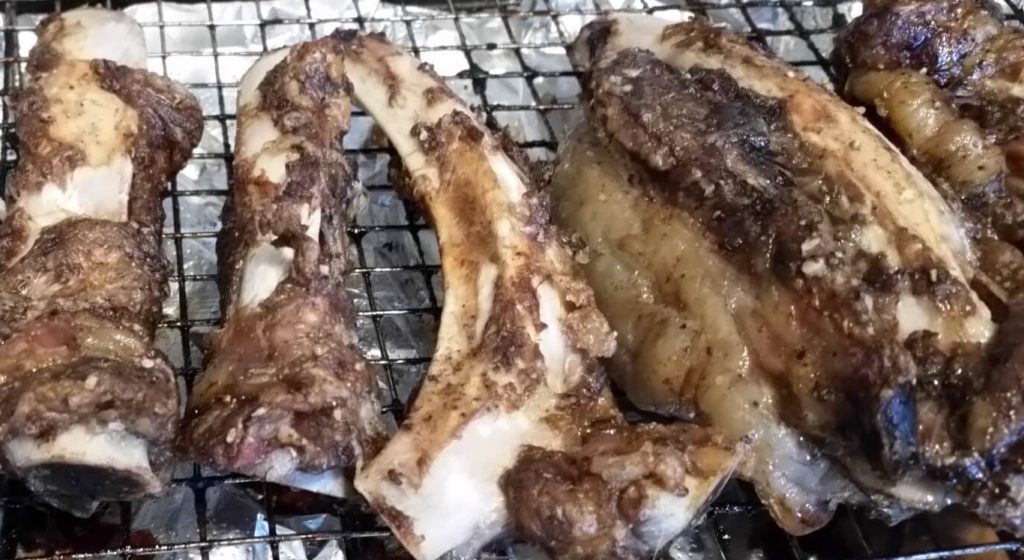
Roast @350F for one hour, which will give you an internal temp of about 165F, still much lower than that required in a conventional BBQ. The lower the temperature, the less overall damage to the structural integrity of the meat. Not tenderness–texture.
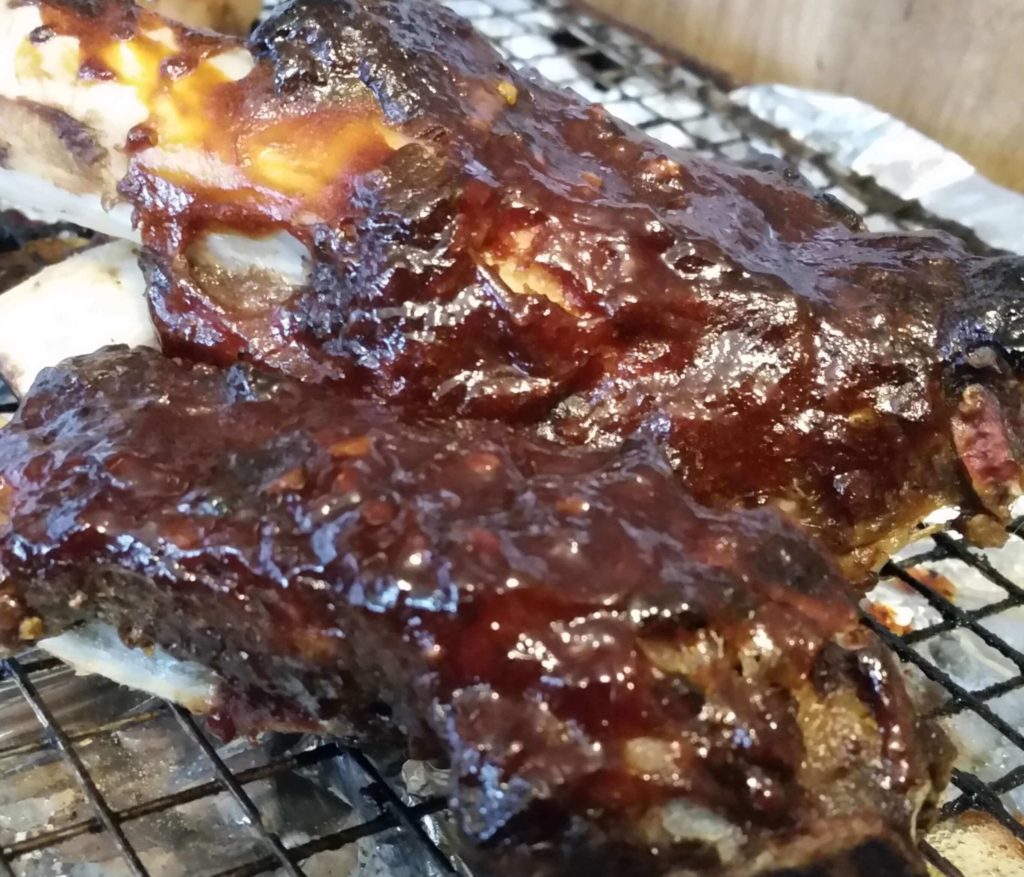
Egg whites in BBQ?
Raw meat always has a thin secretion of albumen, the main component of egg whites. It helps seasonings to stick to the surface of raw meat. If you dip a piece of meat or fish in boiling water, you will see the albumen on the surface coagulate into a soft, white surface. Cooking causes the meat to release albumen, so we are just adding a little back.
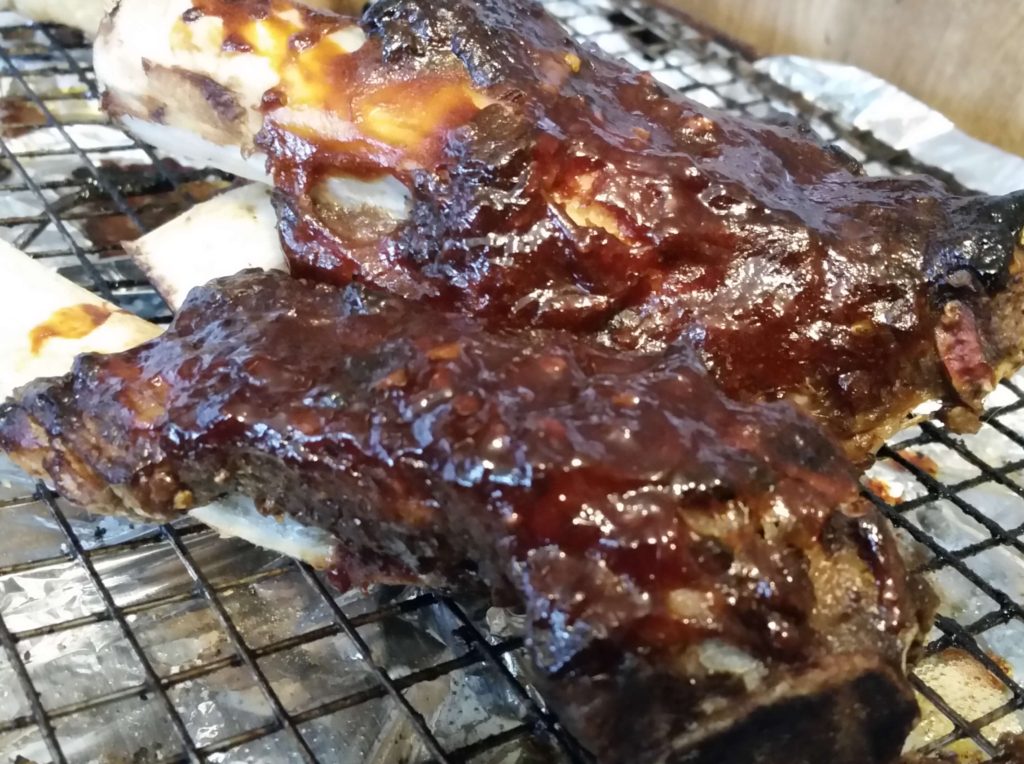
There are literally thousands of secret recipes for BBQ sauces, but most of them are really quite similar, regional styles notwithstanding. The one I make is extraordinarily simple, but, no matter which version you use, this part of the process stays pretty much the same:
Norm’s BBQ Sauce
Ingredients:
- Ketchup, Heinz, one cup
- Worcestershire Sauce, 3 Tablespoons
- Brown Sugar, 3 Tablespoons
- Garlic, fresh or powdered, to taste. I like a lot
- 1 Tablespoon vinegar
- If I have molasses in the house, I might put 1 Tablespoon in.
Procedure: Combine all ingredients, paint on the pre-roasted ribs, and bake @350 in the oven until the desired color is achieved.
A word about liquid smoke
Liquid smoke is made from smoke. It is no better or worse for you than real smoke, it starts out really strong, and tends to dissipate, just like the real thing. There is no shame in using it if you like it.
If you put it in the bag with your meat, the particles are small enough to penetrate the plastic bag, and you may smell smoke in your kitchen. Some people like that. My wife doesn’t particularly care for it. I find that if I incorporate liquid smoke, the later I add it, the better, and it doesn’t take much. Really, if I sniff it from the bottle, it makes me cough. It’s that volatile.
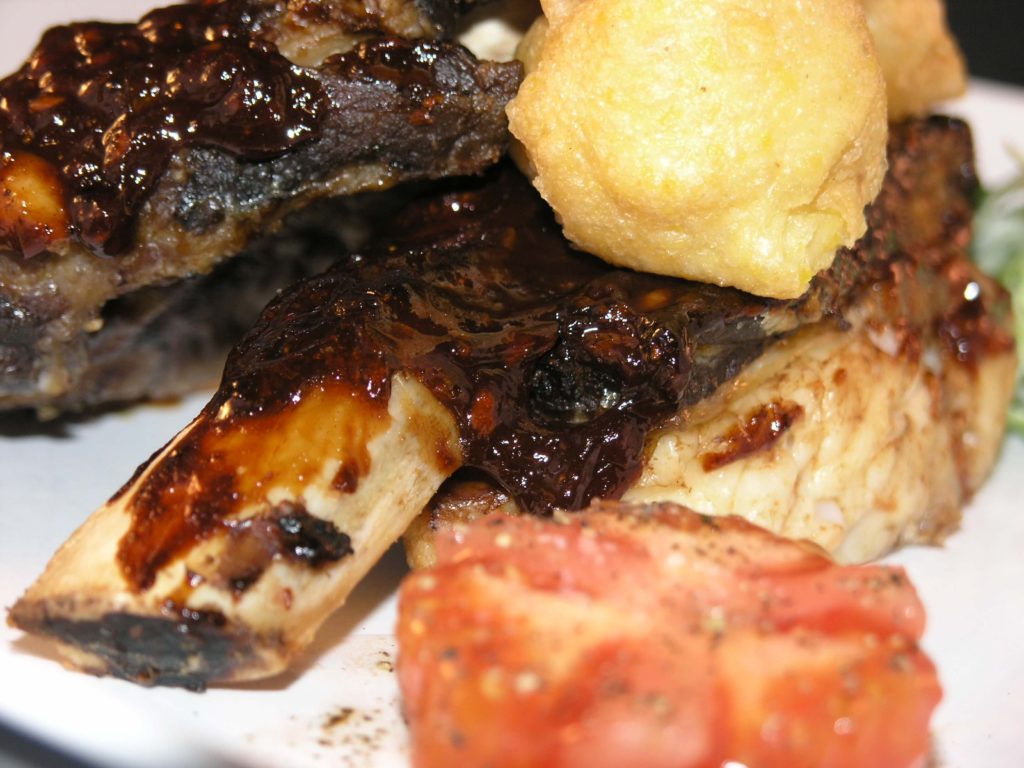
Polenta Hush Puppies, a square tomato

